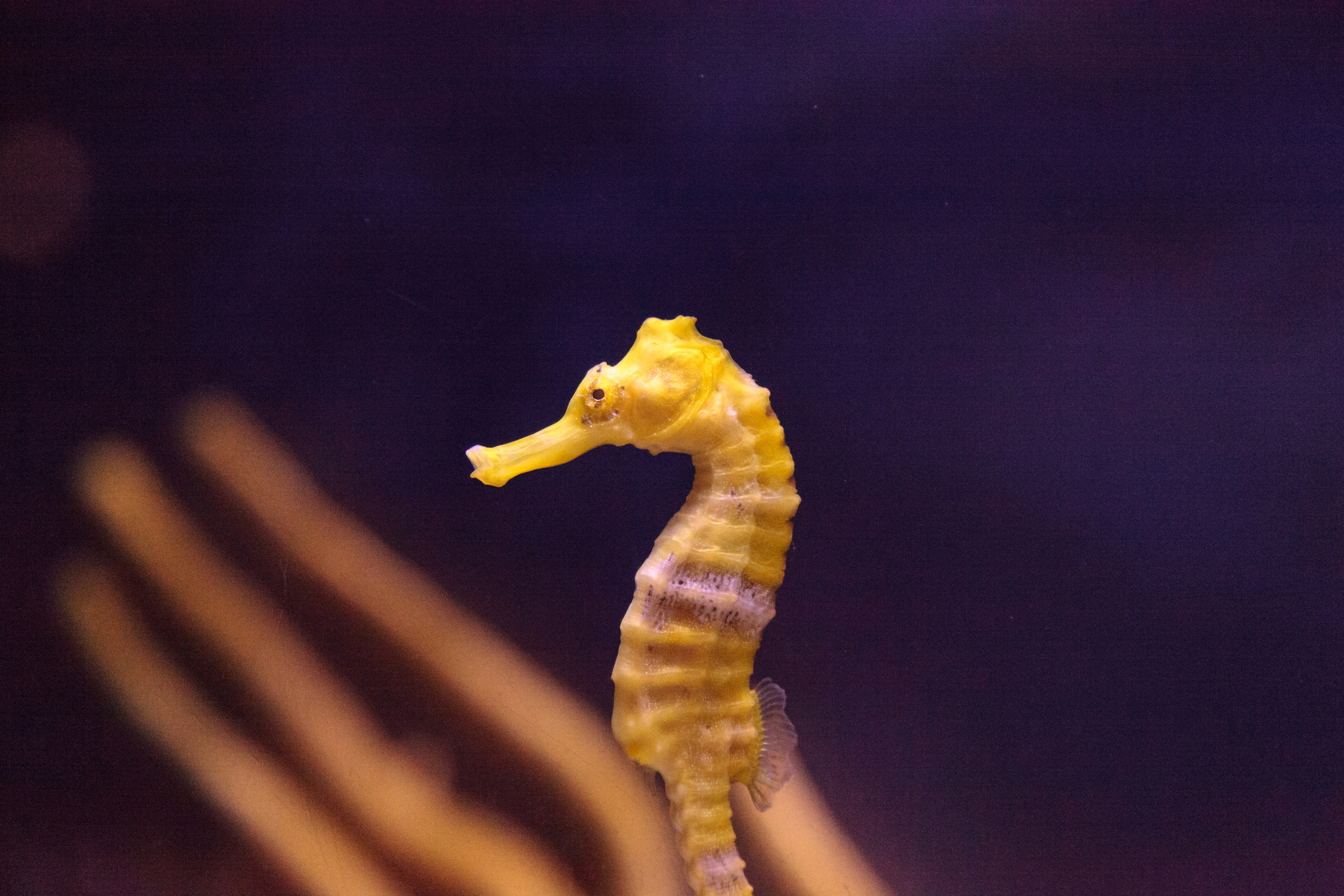
First discovered more than 200 years ago, the lined seahorse might seem like just another seahorse species, but there are plenty of interesting facts to learn about them. From their unique appearance to their special adaptations, let’s explore the ins and outs of one of our favourite resident marine creatures!
What is a lined seahorse?
The lined seahorse – or Hippocampus erectus as it’s known scientifically – is a small vertebrate belonging to the Syngnathidae family, also including a variety of other species such as seadragons and pipefish. They can sometimes be referred to as northern seahorses or spotted seahorses, too.
What do lined seahorses look like?
The lined seahorse is a type of small fish with bony plates covering its entire body. While they have the distinctive horse-like snout you’d expect from a seahorse, they also have many visual characteristics that set them apart from other seahorse species, including the fact that they can change colour. Their colour variations include grey, brown, orange, red, black and yellow, although they all have white lines across their bodies which is where their name comes from.
Their colour changing appearance is an adaptation that’s thought to have developed as a means of protection against predators. It allows them to camouflage against seagrasses and coral if they feel threatened, but this also allows them to sneak up on unsuspecting prey.
It’s also super easy to tell males and females apart since the males are the bigger of the two and male lined seahorses have slightly longer tails.
The largest observed lined seahorse was around 17cm long, with most adults measuring a few centimetres shorter on average. In comparison, the closely related big bellied seahorse measures almost double the length of the lined seahorse!
Typical habitat of a lined seahorse
Preferring warm waters and areas with coral, seagrass and mangroves, the typical habitat of a lined seahorse stretches from the western Atlantic Ocean to the Gulf of Mexico, with many sightings off the coast of Florida.
They spend most of their lives at depths between 2 and 30 feet since they aren’t strong swimmers and will keep themselves tethered to coral, seagrass and mangroves using the strength of their tails.
Interesting facts about lined seahorses
Ready for some more quick-fire facts about these seahorses? Here are six of our favourites:
- Like other seahorse species, lined seahorses are poor swimmers. They use their tails to keep themselves attached to coral and sometimes even each other to prevent the water from sweeping them away!
- They mate for life or a season in a monogamous pair and rarely spend time in groups.
- As with other seahorse species, male lined seahorses carry embryos in their brooding pouch and give birth to the offspring instead of females.
- They’re cold-blooded marine creatures, meaning their body temperature is regulated by the water temperature. This is why they prefer to set up their habitats in warmer waters.
- They typically feed on large amounts of small shrimp, very small fish, plants and plankton. But, because of their lack of stomach and poor digestive system, they rely on their intestines to absorb nutrients from their food. They also use their snouts to suction their prey by directing a small current of water into it.
- Speaking of their diets, growing lined seahorses can also eat continuously for up to 10 hours each day to make sure they’re getting plenty of nutrients.
- Lined seahorses can move their eyes independently, allowing them to keep one eye on their food and another on potential predators.
Where can you see lined seahorses at Hastings Aquarium?
This marine creature isn’t native to the waters surrounding the UK, but luckily you don’t need to travel far to see it since we have our very own here at Hastings Aquarium. In our Seahorse Tank, you can spot the lined seahorses up close and learn all there is to know about their appearance, behaviours, habitats and more.
As marine life experts, we love to share our knowledge of these exciting creatures, from our favourite facts to the different species of seahorses thriving in waters around the world. For more insights and fun fish facts, check out our blog.
Type
Fish
What do they eat?
Small shrimp, very small fish, plants and plankton
Size
Up to 17cm
Water Type
Salt
Where are we?
Western Atlantic Ocean & Gulf of Mexico
